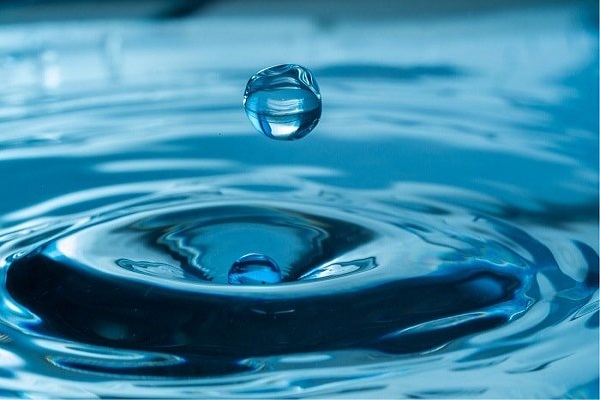Water, the lifeblood of our planet, sustains ecosystems, fuels agriculture, and quenches the thirst of billions. Yet, beneath the serene ripples of rivers and lakes lies a complex world of water quality that directly impacts our environment and, consequently, our health and well-being. In this exploration, we delve into the critical aspects of water quality and discuss innovative ways to explore and enhance it.
Understanding Water Quality: A Multifaceted Perspective
Water quality is a comprehensive measure of the physical, chemical, biological, and radiological characteristics of water. It reflects the health of aquatic ecosystems and determines the suitability of water for various uses, including drinking, agriculture, and recreational activities. Examining water quality involves assessing parameters such as temperature, dissolved oxygen, pH levels, nutrient concentrations, and the presence of pollutants.
Challenges in Water Quality Monitoring
Monitoring water quality is a challenging endeavor due to the dynamic and interconnected nature of aquatic systems. Natural variability, human activities, and environmental changes contribute to the complexity of assessing and maintaining water quality. Traditional monitoring methods often fall short of providing real-time and comprehensive data, necessitating the adoption of innovative technologies.
Technological Advancements in Water Quality Exploration
In recent years, technological advancements have revolutionized the way we explore water quality. Cutting-edge sensors, satellite imagery, and data analytics enable a more thorough and timely understanding of water conditions. One notable innovation is AcouInfo’s Ultrasonic Flowmeter, a technology that utilizes soundwaves to precisely measure key water parameters, offering a unique perspective in the realm of water quality exploration.
The Role of AcouInfo’s Ultrasonic Flowmeter
AcouInfo’s Ultrasonic Flowmeter serves as a game-changer in water quality exploration. By deploying advanced acoustics, this technology captures data on velocity, flow, temperature, and salinity of water with unparalleled accuracy. The ability to measure these parameters with precision contributes significantly to understanding the dynamics of water bodies, thereby enhancing water quality assessments.
Exploring Water Quality with AcouInfo: A Comprehensive Approach
- Accurate Parameter Measurement: AcouInfo’s technology ensures precise measurement of key water parameters. From the speed of the water flow to temperature and salinity, the Ultrasonic Flowmeter captures data with a level of accuracy that was previously challenging to achieve.
- Real-time Monitoring: The Ultrasonic Flowmeter provides real-time data, allowing for continuous monitoring of water conditions. This capability is crucial for identifying sudden changes or anomalies that may indicate potential water quality issues.
- Environmental Impact Assessment: The technology aids in assessing the impact of human activities and environmental changes on water quality. By understanding how factors such as land use and climate affect water parameters, AcouInfo contributes to informed decision-making for sustainable resource management.
- Biodiversity Preservation: The precise data collected by the Ultrasonic Flowmeter offers insights into the health of aquatic ecosystems. This information is invaluable for preserving biodiversity, as it helps identify areas where intervention is needed to protect and restore natural habitats.
- Early Detection of Pollution: AcouInfo’s technology plays a crucial role in the early detection of pollutants. By continuously monitoring water quality parameters, it becomes possible to identify pollutant sources and take prompt measures to prevent further contamination.
Collaborative Efforts for Water Quality Enhancement
Exploring water quality goes beyond technology; it requires collaborative efforts from governments, researchers, industries, and communities. AcouInfo’s Ultrasonic Flowmeter acts as a catalyst, facilitating data-driven collaboration for effective water quality enhancement.
- Government Initiatives: Governments can leverage technology like the Ultrasonic Flowmeter to establish comprehensive water quality monitoring programs. The data collected can inform policies and regulations aimed at protecting water resources.
- Research Advancements: Researchers benefit from the detailed and accurate data provided by the Ultrasonic Flowmeter. This information contributes to scientific studies on water quality trends, ecosystem dynamics, and the long-term impacts of human activities.
- Industrial Practices: Industries can adopt proactive measures to mitigate their impact on water quality. Real-time data allows businesses to monitor their discharges and implement sustainable practices, reducing their environmental footprint.
- Community Engagement: Empowering communities with information about water quality fosters collective responsibility. AcouInfo’s technology facilitates community engagement by providing accessible data that encourages individuals to participate in local conservation efforts.
Conclusion: Navigating the Depths of Water Quality Exploration
As we navigate the depths of water quality exploration, innovative technologies like AcouInfo’s Ultrasonic Flowmeter emerge as invaluable tools. By harnessing the power of soundwaves, we can uncover the intricacies of water parameters with unprecedented precision. This transformative approach not only enhances our understanding of water quality but also propels us towards sustainable practices and the preservation of one of Earth’s most precious resources.
In the journey beneath the ripples, we find a confluence of technology, collaboration, and environmental stewardship. Through the exploration of water quality, we embark on a collective mission to ensure that the life-sustaining force of water remains pure, vibrant, and resilient for generations to come.

